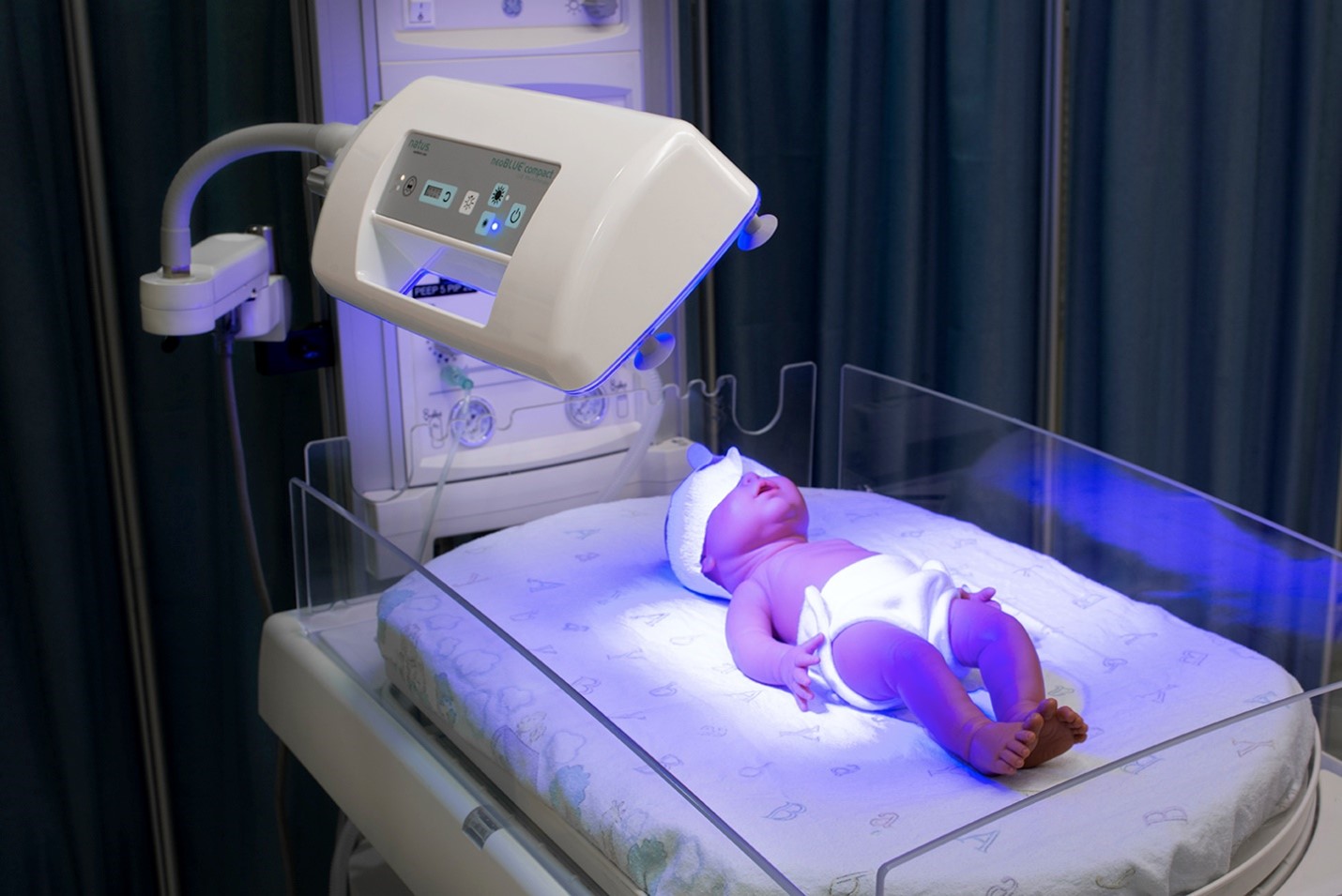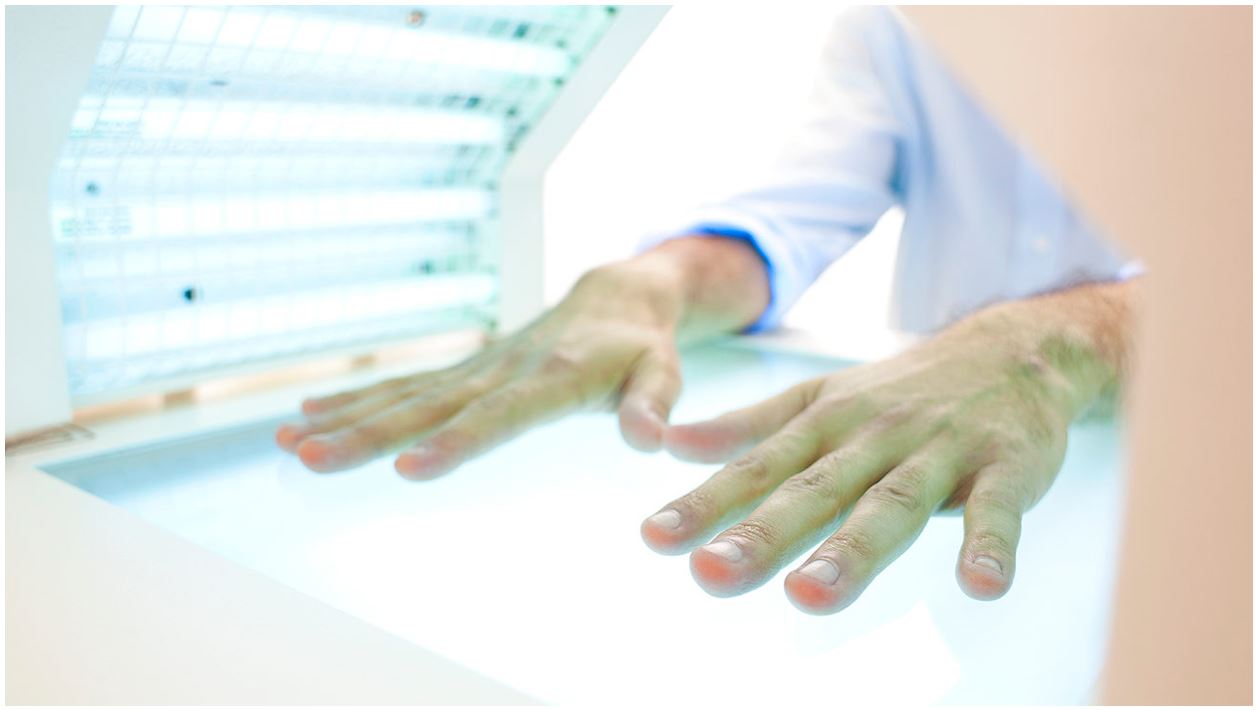Phototherapy is a kind of non-invasive treatment that involves exposure to light to treat various medical conditions. Phototherapy/Light therapy, also referred to as heliotherapy that consists of either exposure to daylight or some equivalent light form as a treatment for seasonal affective disorder (SAD) or exposure of the skin to a specific wavelength of light to treat certain skin conditions.
Since ancient years, light has played a preliminary significant role in the treatment of various diseases. Continued research generated a potential medical interest in the effects of light to treat and cure skin diseases. The modern discoveries and inventions, as well as the balneological experiences of the treatment with sunlight has contributed to the transition from heliotherapy to artificial light phototherapy. Phototherapy with the use of artificial light sources gained importance in the treatment of skin diseases with a noninfectious etiology. Phototherapy is also used as a treatment for wintertime seasonal affective disorder (SAD) and circadian rhythm disorders, which include delayed sleep phase disorder (DSPD). There is preliminary evidence to support its use in the treatment of non-seasonal psychiatric disorders. As a treatment for disorders of the skin, the 2nd kind of light therapy, called ultraviolet light therapy, has helped to correct psoriasis, eczema, acne vulgaris, and neonatal jaundice.
Benefits of Phototherapy
• Correction of certain skin disorders like psoriasis, vitiligo
• It can be used in some cancers and precancers
• Phototherapy can enhance mood and sleep disorders
• Can improve and cure hyperbilirubinemia and jaundice
• Skin related cancer symptoms
Types of Phototherapy in Neonatal Jaundice
• Conventional phototherapy: This type of treatment is performed by keeping the baby under a halogen or fluorescent lamp with their eyes properly covered.
• Fibreoptic phototherapy: In this type of treatment, the baby is made to lay on a blanket that incorporates fibreoptic cables; light travels through the fibreoptic cables and shines onto the baby’s back.

Nature of the Light used in Phototherapy
• Narrowband ultraviolet B (NB-UVB)
• Broadband ultraviolet B (BB-UVB)
• Targeted ultraviolet B (UVB)
• Psoralen plus ultraviolet A (PUVA)
Light Sources used in Phototherapy Devices Include:
• Halogen Spotlight
• Fluorescent Lamps
• Light Emitting Diodes (LEDs)
Medical Uses
• Neonatal Jaundice/Postnatal Jaundice: Light therapy is one of the accepted therapy in the treatment of neonatal jaundice. Bilirubin – a yellow pigment formed in the liver during the breakdown of old red blood cells. Bilirubin sometimes fails to be effectively cleared by a neonate’s liver causing neonatal jaundice. Accumulation of the excess bilirubin can harm and damage the central nervous system, and so bilirubin buildup must be treated properly. Phototherapy makes use of the energy from light to isomerize the bilirubin and transform it into compounds the newborn can excrete in the form of urine and stools. Bilirubin is most successful in absorbing light in the blue region of the visible light spectrum between 460-490 nm. In some cases, newborn jaundice is treated by lowering the bilirubin levels from baby's blood through a process called photo-oxidation.
• Phototherapy of Tumors: Lasers provide a means to deliver high-intensity light to any small, well-defined areas under precise control. The biological response of the tumors depends on the wavelength, intensity of light, and the absorption capacity and characteristics of the target organ. The significant effects are thermal and include tissue vaporization, necrosis with later sloughing, and stimulating an inflammatory response that may lead to local fibrosis. Selective tumor phototherapy is possible in few organs by sensitization with HpD (hematoporphyrin derivative) and consecutive treatment with a laser.
• Skin Correction: Light therapy treatments for the skin usually involve exposure to UV light. The exposures can be in a small area of the skin or may include the whole body surface as per the requirement. The most common treatment is performed with a narrowband UVB of the wavelength of approximately 311-313 nm. Exposure to photons at this specific wavelength enables the body to secrete vitamin D.
• Atopic Dermatitis: Light therapy is known as one of the best monotherapy treatments for atopic dermatitis (AD) for patients who have not responded to traditional topical treatments.
• Psoriasis: UVB phototherapy has shown to be effective for psoriasis treatment. UV radiation is known to reduce the inflammatory responses and suppress the immune system in psoriasis patients.
• Vitiligo: Phototherapy is an effective treatment in the correction of vitiligo because the light forces the skin cells in producing melanin in order to protect the body from UV damage. About a percentage of the human population suffers from vitiligo that is the cause of painless distinct light-colored patches of the skin of the face, hands, and legs.
• Cancer: As per the American Cancer Society, there is evidence that ultraviolet light therapy may be effective in the treatment of certain types of skin cancer. Photodynamic therapy is often used to treat certain superficial non-melanoma skin cancers.

Mood and Sleep-Related Phototherapy
Sleep and mood-related disorders that can be treated by phototherapy are:
• Seasonal affective disorder
• Non-seasonal depression
• Chronic circadian rhythm sleep disorders (CRSD)
• Circadian rhythm sleep disorders and jet lag
• Situational CRSD
• Sleep disorder in Parkinson's disease
• Sleep disorder in Alzheimer's Disease

Risks of Phototherapy
There are some limitations from using phytotherapy in certain people, and they must not try therapy with light. This includes people with lupus, the person having a history of skin cancer, or the skin condition xeroderma pigmentosum, which makes people overly sensitive to sunlight. In addition, certain medications – such as some antibiotics – may cause sensitivity to light. Moreover, phototherapy can:
• make skin sore and red
• leave blisters
• change the pigment of the skin
• it might increase the risk for certain types of skin cancer

